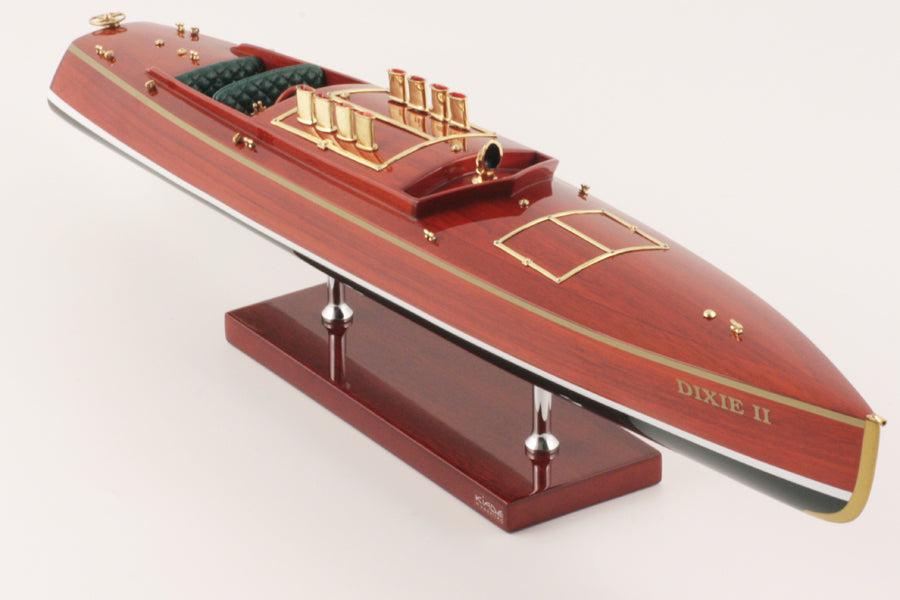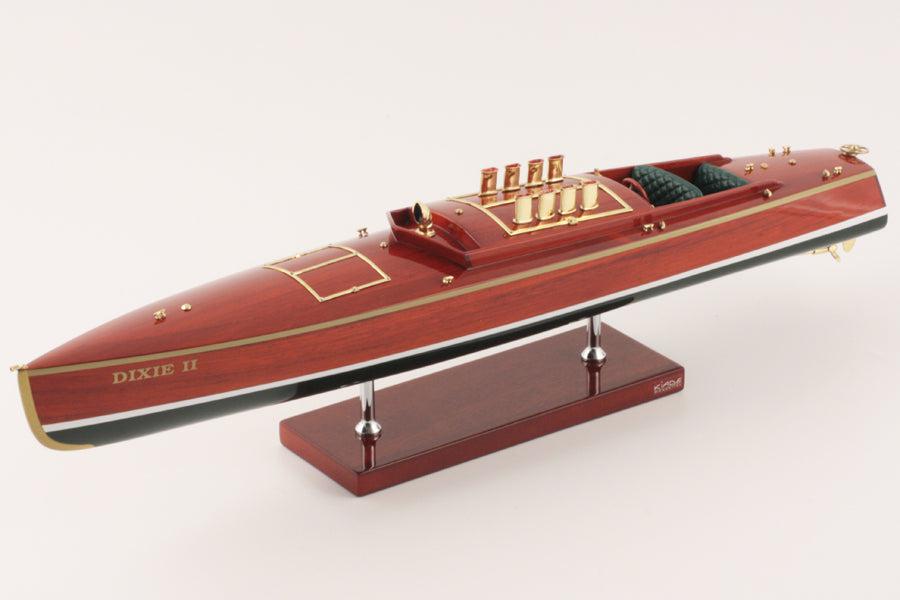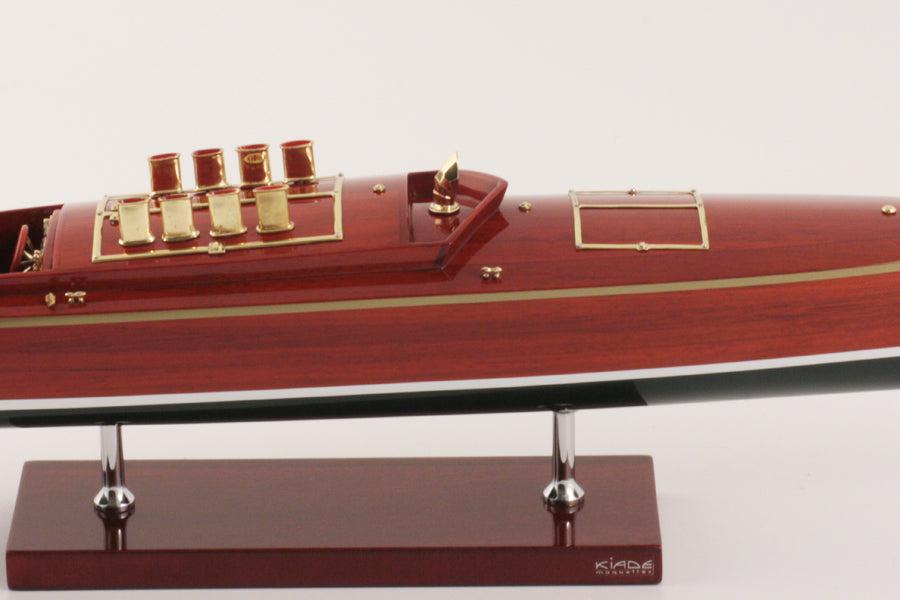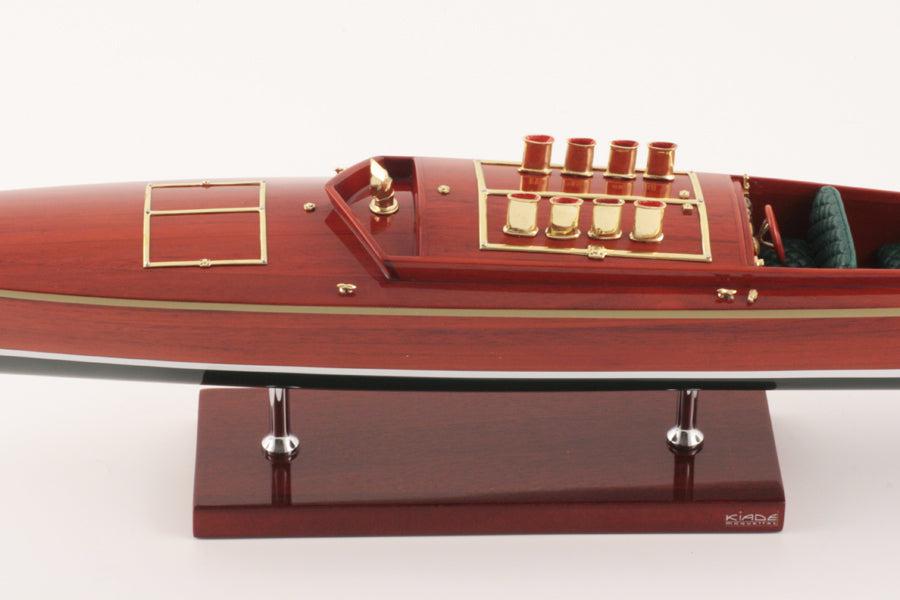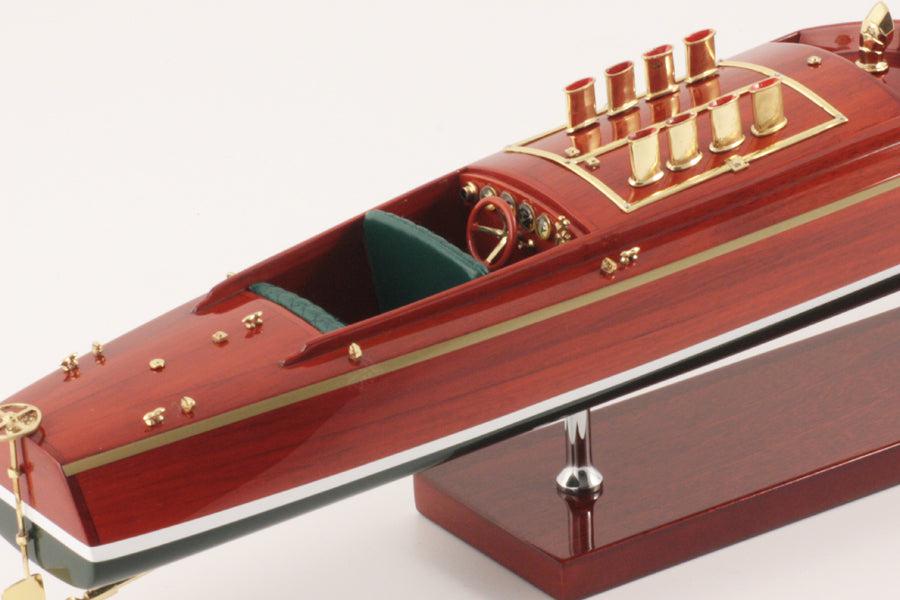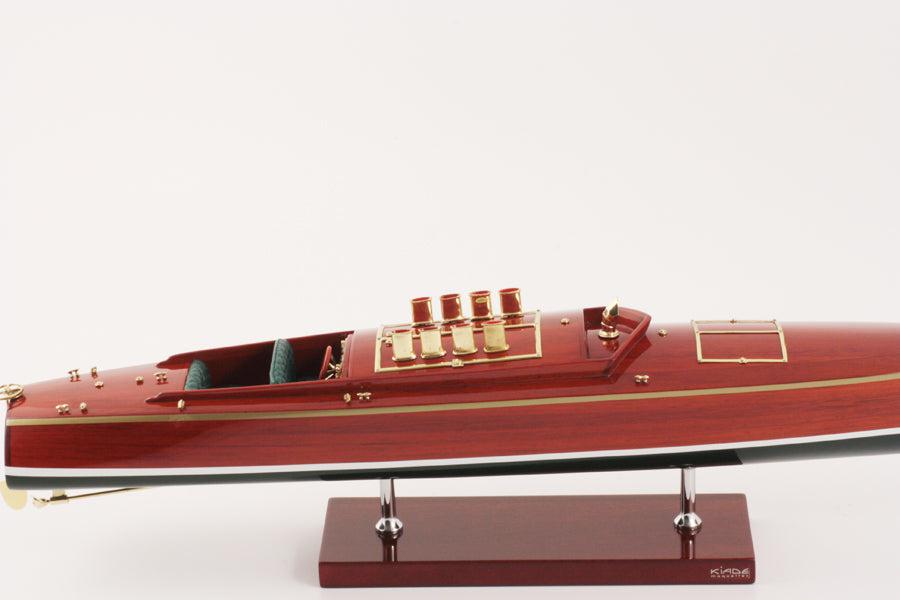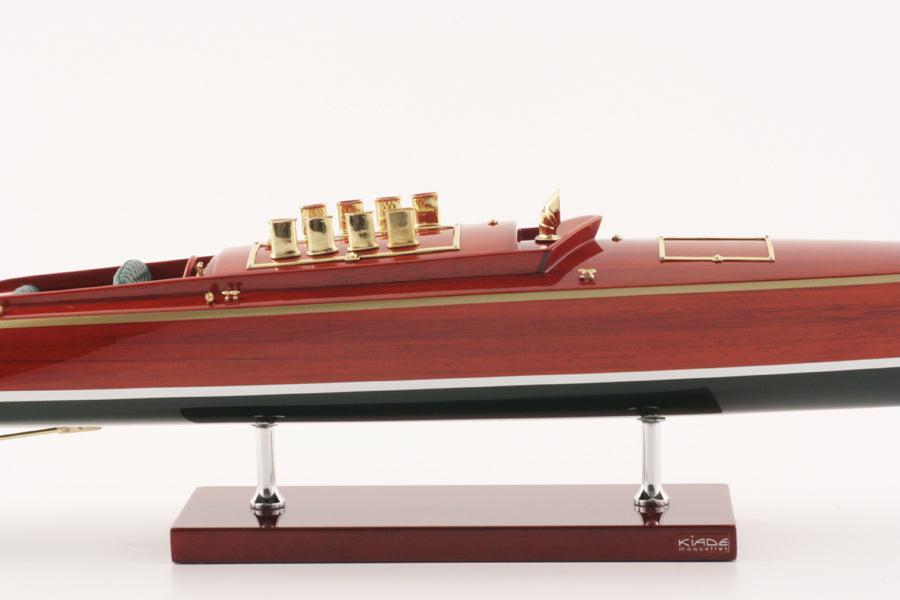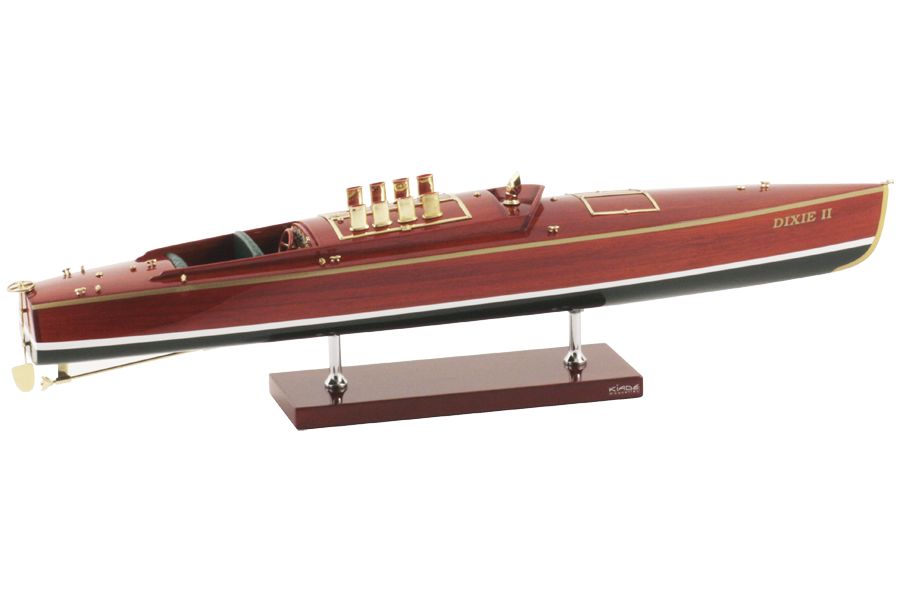Description
MODEL DIXIE II 50cm
This model boat Dixie II with a length of 50 cm is a replica of the legendary boat. This model is made entirely by hand with noble materials: wood (beech wood), marine upholstery. All fittings are crafted by jewelers in chrome plated brass. 10 coats of lacquer are applied to achieve excellent lacquer gloss.
The model is delivered in secure packaging.
Numbered certificate of authenticity and 1 year guarantee.
MODEL DIXIE II 50cm
This Model by DIXIE II with a length of 50 cm is a replica of the legendary boat. This model is made entirely by hand with noble materials: wood (beech wood), marine upholstery. All fittings are crafted by jewelers in chrome plated brass. 10 coats of lacquer are applied to achieve excellent lacquer gloss.
The model is delivered in secure packaging.
Numbered certificate of authenticity and 1 year guarantee.
995.00 €
In stock
History of this model:
The DIXIE II is a "displacement hull" racer designed by Clinton Crane whose talents spanned both sailing yachts and powerboats. This new boat was specially designed to defend the Harmsworth trophy won by the first Dixie in 1907. DIXIE II was built in 1908 on City Island by the highly respected timber yard. Her hull was tested in a hull tank and her engine was designed by Clinton Crane's brother Henry, an automaker. This was a 45 degree V8 unit developing 200 hp each at 900 rpm and was specially designed for the boat. On her first attempts on July 27, 1908, DIXIE II achieved a speed of 35 mph and easily won the Harmsworth Trophy on August 3 with an average speed of 32 mph. Her British adversary, the Wolseley Siddeley, had two engines with 200 hp each, while the Daimler II boasted 3 engines with a total of 525 hp.
DIXIE II also won the next 2 Gold Cup events in 1909 and 1910.
1909 marked the end of experiments with displacement hulls for racing boats. DIXIE II can be considered the finest example of this type of boat design in America. At low speed, these hulls are most efficient than seaplanes with stepped hulls and concave V-shapes with no step. One of the major flaws of displacement hulls like that of DIXIE II is that the loss of stability at speed limits their ability to increase that speed and plan over the water.
At the end of the 19th century, Clinton Hoadley Crane was an American amateur naval architect who even drew motorized sailboats for him and his friends at the time. Graduated from Harvard School of Engineering in 1894, he left to study at the University of Glasgow 1897-1898. There he meets the French architect Augustin Normand, who introduces him with motor boats. At the beginning of the 20th century, from 1900 to 1912, he was definitively established as a naval architect and spent 12 years building boats that were much appreciated on the East Coast of the United States. It draws small and large motor boats and sailing boats, and works out not only the international rule but also the universal rule. It launches Endymion in 1900, which sets a record of crossing the Atlantic in 13 days and 8 hours. Record beaten by the Goélette Atlantic de Charlie Barr. On August 5, 1908, in Bayonne, New York, he set a world absolute motor speed record in his motorboat, the Dixie II, by achieving 36.6 miles per hour.

